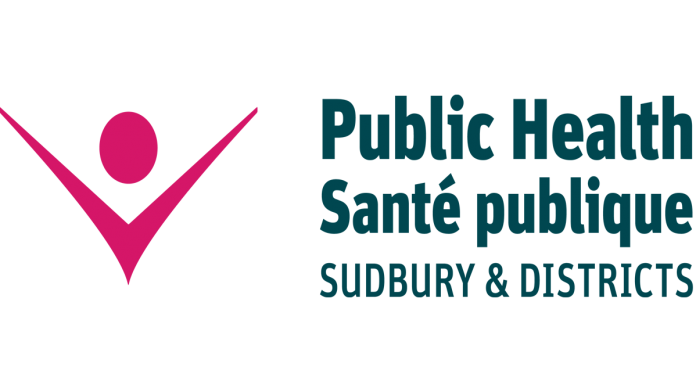LITTLE CURRENT – The Ontario government announced $32.7 million in new annual funding for targeted addictions services and supports last Wednesday, July 7, including $6.9 million for targeted treatment for opioid addictions. This is part of the government’s plan to invest $3.8 billion into mental health and addictions over 10 years through its foundational document, Roadmap to Wellness. According to a spokesperson for the Ministry of Health, the Mental Health and Addictions Centre of Excellence within Ontario Health will be working with Ontario Health’s five regions to allocate this funding across Ontario and within each region with a view to addressing needs based on evidence.
The Expositor had an opportunity to sit down with Michael Tibollo, associate minister for mental health and addictions to talk about the opioid crisis, the new funding and Ontario’s Roadmap to Wellness. Associate Minister Tibollo’s background made him an ideal choice for his role in this new ministry, created in July 2019. He was chairman of the Caritas School of Life, a therapeutic community program located in Woodbridge, is a certified addictions counsellor and is currently working towards his doctorate in clinical psychology.
You need to understand the genetics of an individual with mental health or substance use issues and you need to understand the environment the person came from, he explained. “And if there are attachment issues, what those attachment issues are. You need to understand the physical environment the person is living in and of course, you need to underscore all of that with the spirituality. You need to understand and have to give that person that intrinsic motivation to want to live and improve his life.”
One of his biggest concerns currently, as the minister responsible for mental health and addictions, is the number of people, young women in particular, that are suffering from eating disorders. “I’m trying to figure out why during the pandemic has this become a pandemic in and of itself,” said Associate Minister Tibollo. “It’s one of the most complicated mental health issues that a person can have because it has to do with nutrition, it has to do with physiology and it has to do with psychology. Interventions are extremely costly and extremely few and far between. In speaking with some psychiatrists, they’ve come back and said the increase in eating disorders are the result of time during the pandemic that kids have spent in front of a screen.”
Body image issues can become a focal point because kids see themselves in that screen the entire time they’re in front of that screen. That ends up causing them to want to change, he explained. “It causes them to want to control the only thing they can control and that’s their food intake. Kids are starving themselves.” They are developing bulimia, anorexia or another eating disorder and it’s often difficult to see until it’s too late. “I’m seeing that becoming a huge issue and it concerns me. The end result of many eating disorders is either an addiction to compensate or to cope with the problem or suicide. We’re seeing those numbers creeping up.”
The pandemic has changed nearly everything, he said. The number of people accessing the Kids Help Line is approximately 10 times what it was prior to the pandemic. Opioid overdoses and deaths have increased over 60 percent from pre-pandemic numbers. Anxiety and depression are also on the rise. “As a government, it’s difficult when you’re trying to figure out how to deal with these problems but you’re telling everyone to stay at home.”
A number of virtual supports have been developed, including internet-based cognitive behavioural therapy (ICBT) and the Bounce Back program. As of last week, more than 83,000 people in the province were on the ICBT programs. People can self-refer and all programs are available free of charge at ontario.ca/mentalhealth.
“The feedback we’re getting is in line with what academics consider to be effective treatment or supports evidence-based treatment. We are getting about a 70 percent success rate where people are actually completely cured. This is for mild and moderate anxiety and depression. It has worked as well on acute which is something we’re investigating now as well.”
The system was so popular, he said, that the initial $20 million investment has been increased. The system hasn’t been in place long enough to determine recidivism rates. The province is also developing a structured psychotherapy program for in-person supports that will be fully funded. It will again utilize CBT to deal with anxiety and depression. “If you want to talk about mental illness, the two most significant issues we have are anxiety and depression,” he said.
He offered some additional statistics: In Canada, half a million people a week don’t go to work because of a mental health or addiction issue. More than two-thirds, or 70 percent, of all mental health issues could have been dealt with in childhood. One in three Canadians will have some kind of a mental health issue because the supports aren’t there. Early intervention can resolve 25 percent of all addictions. “By building resiliency into our kids with education and other programs, we can reduce addiction by 25 percent. That’s a reported statistic from a study that was peer reviewed.”
“That was a foundational issue for me when I became minister,” he said. “Do I invest in children and increase prevention and resiliency or do I invest in capacity because of the number of people that are dying. We’ve tried to invest across the board as much as possible. We opened up 30 beds at Pine River for children and youth. Is it enough? No, it’ll never be enough, unless we deal with the underlying issues which require us to look at the social determinants of health. That’s the problem.”
The hardest piece is figuring out how to deliver standardized services around a province the size of Ontario. “It’s difficult to do, and that’s why we’re looking to a hub and spoke model for the North,” he said. “One of the reasons I’m here is to see where we can either utilize an existing facility or support the development of another facility to form the hub, and then there would be places where they can radiate out the supports into other communities.” On Manitoulin, he points to the land-based healing program at Gwekwaadziwin Miikan (Gwek) as a potential hub. When asked if the ministry is considering supporting a youth pilot program at Gwek, he responded, “Definitely. The youth program is to me the pilot that I’d like to see for Indigenous healing. Breaking it down into the province’s hub and spoke model gives me the ability to create a net, kind of like a layer of expertise in the North. That level of expertise is direly needed because of the situation we’re in with the number of opioid overdoses up here.”
The topic of overdoses on Manitoulin was researched extensively in the recent special supplement to The Expositor ‘Out of the Shadows,’ available online at Manitoulin.com or through this newspaper’s offices in Little Current and Gore Bay.
Associate Minister Tibollo spoke about the need for culturally sensitive services. “I think our best success will be when Indigenous people are trained to provide Indigenous supports and services to Indigenous people. As a matter of fact, after they’ve been trained, I think we should bring them in to train others because land-based healing is an amazing way to help a person with addiction regardless of where a person originates in the world.”
“We’re looking at a client-centred, holistic approach model to help individuals. I’m not as concerned about length of treatment as I am about the quality of treatment. When you figure out quality of treatment and you build a system that has peer to peer supports, that has cultural sensitivity, where therapeutic alliances can be built quickly and that is using evidence-based treatment strategies, you can instil in the individual the skills they need.”
You can’t forget social determinants of health, the associate minister said. When he was Minister of Community Safety and Correctional Services, he had a guns and gangs map. “Everywhere in the province it would light up where the guns and gangs were. When I became Minister of Tourism, Culture and Sport I looked at where the community centres and community programs were and those spots were few and far between. There was nothing organized to give the kids something to do outside of school. Then I became the associate minister for mental health and addictions and the pandemic hit. Where are the hot spots for COVID-19? Surprise, surprise. They’re all in the same places. The underlying social determinants of health are not being met. If they’re not being met you can have all the money in the world and it’s like putting a band-aid on a hemorrhaging wound.”
His role is to bring to the cabinet table the perspective of mental health and addictions and its relevance in everything we do, he said. “We talk about an economic recovery, but you have to have healthy minds to be able to undertake an economic recovery.”





